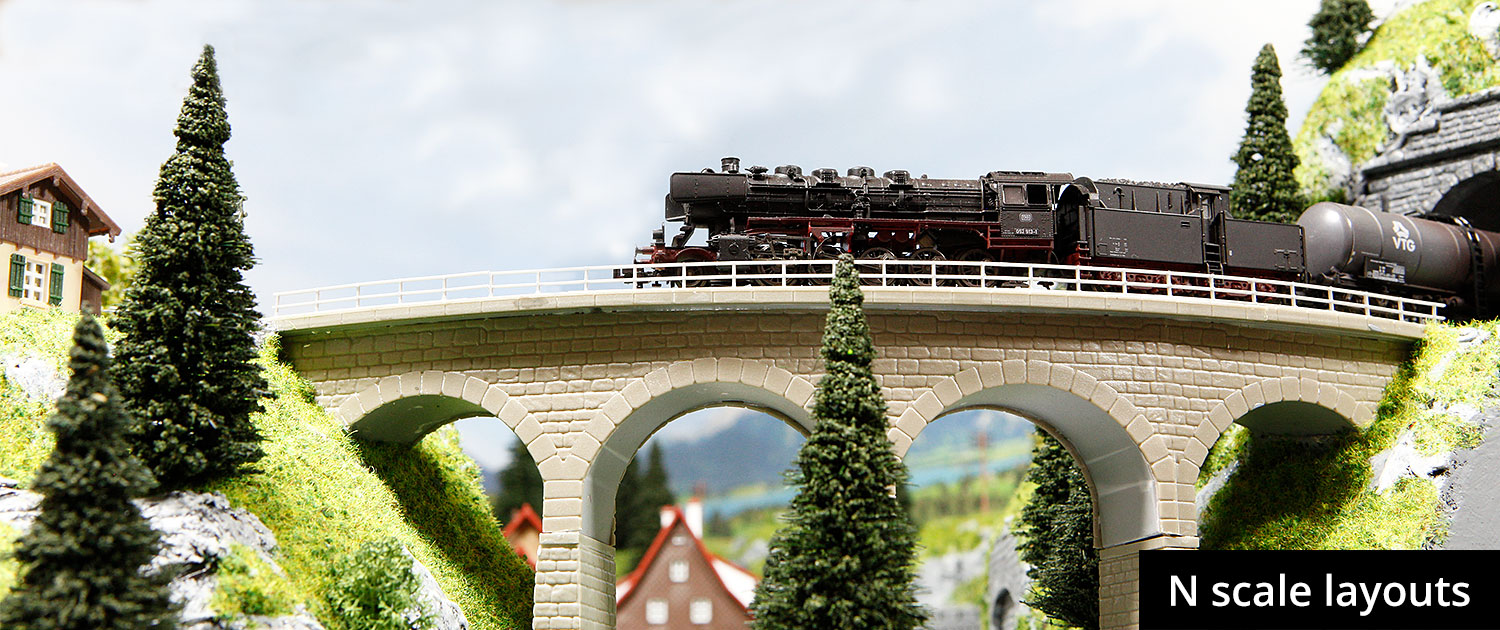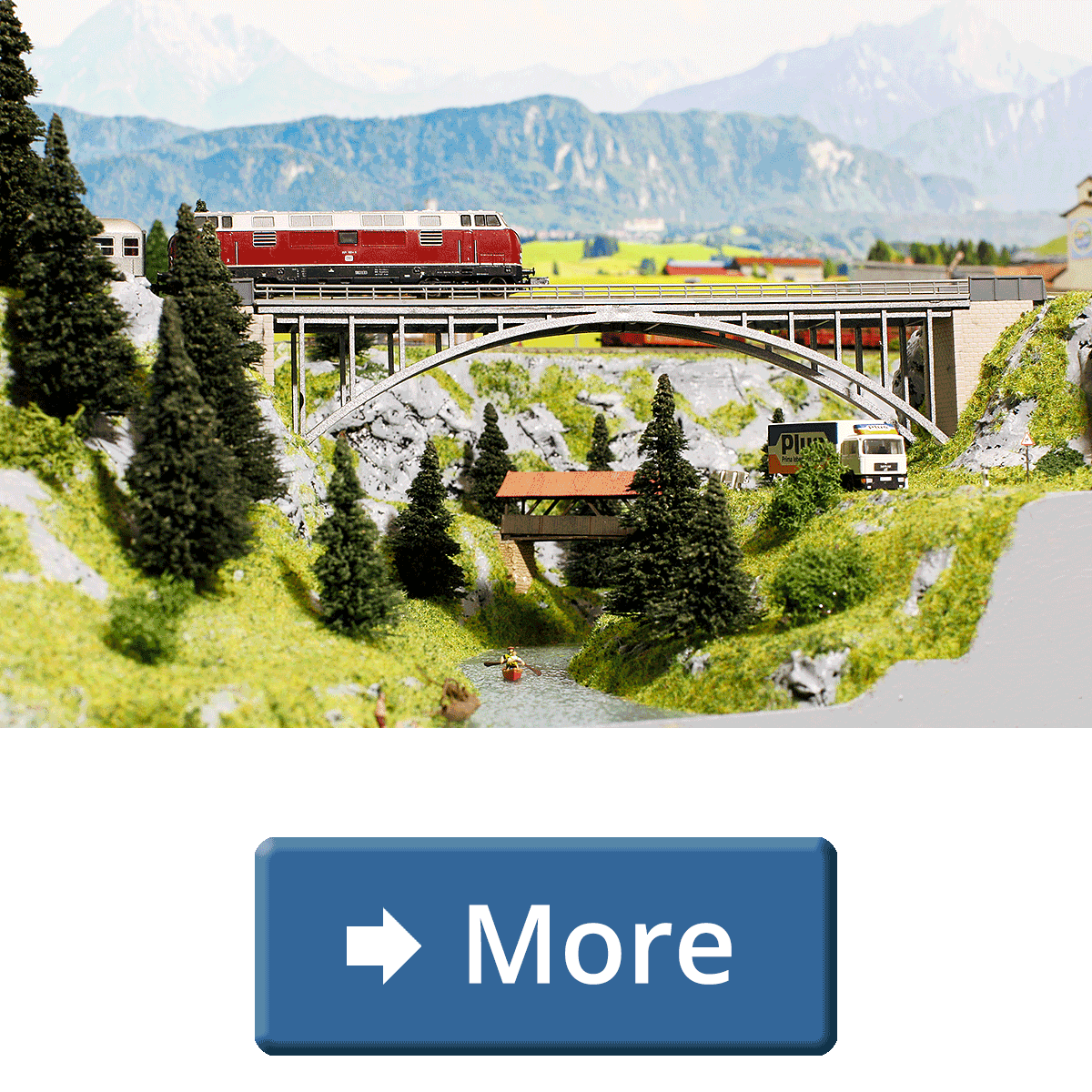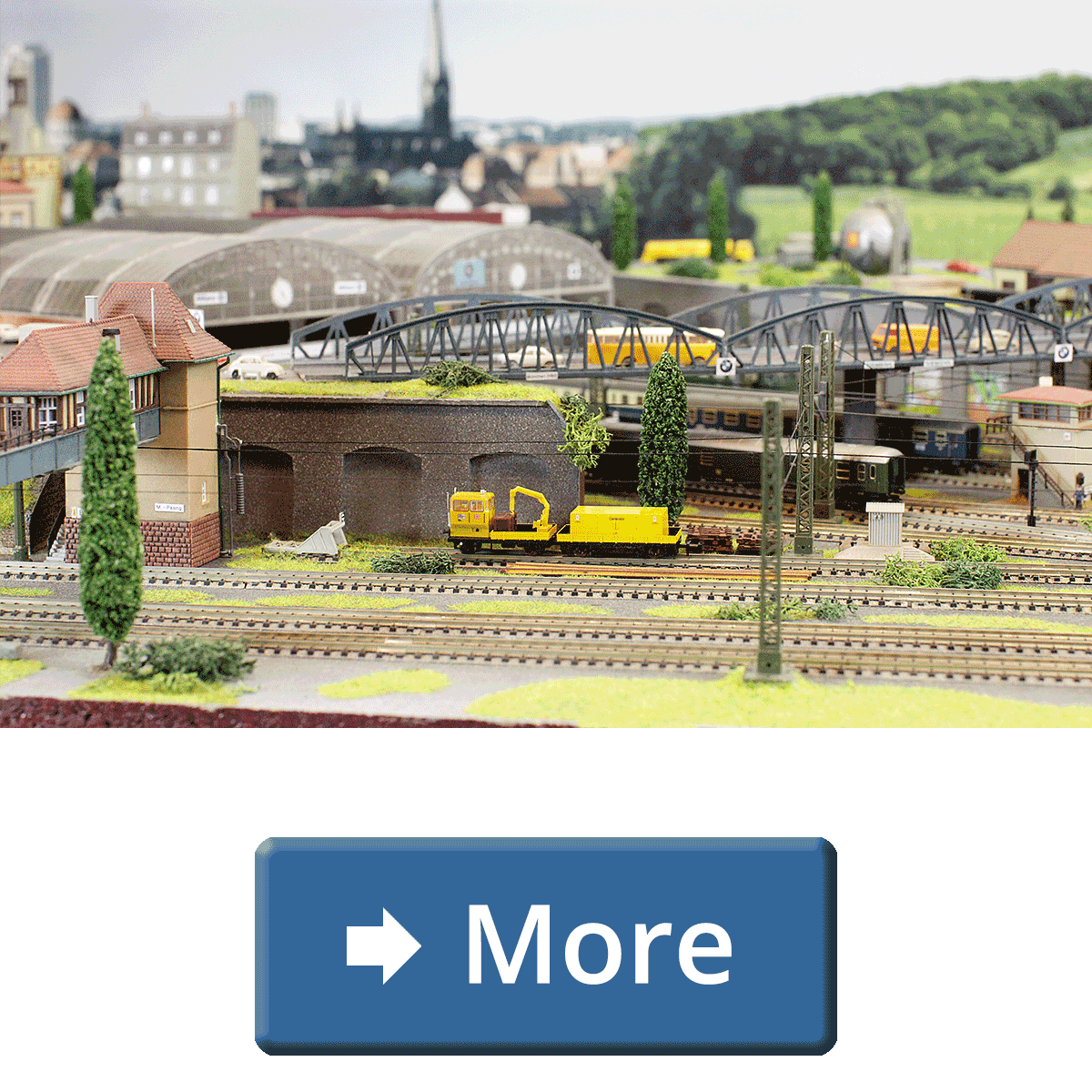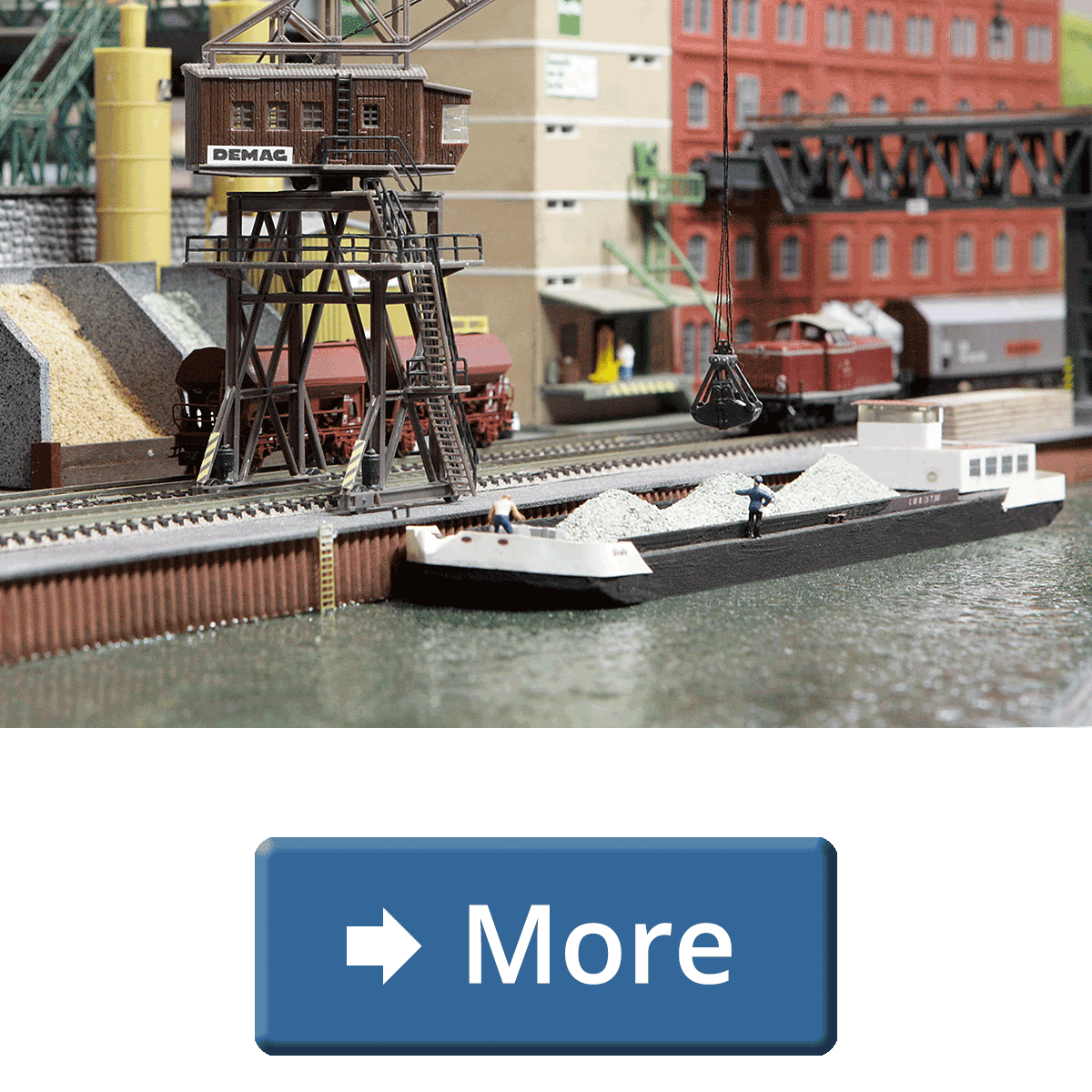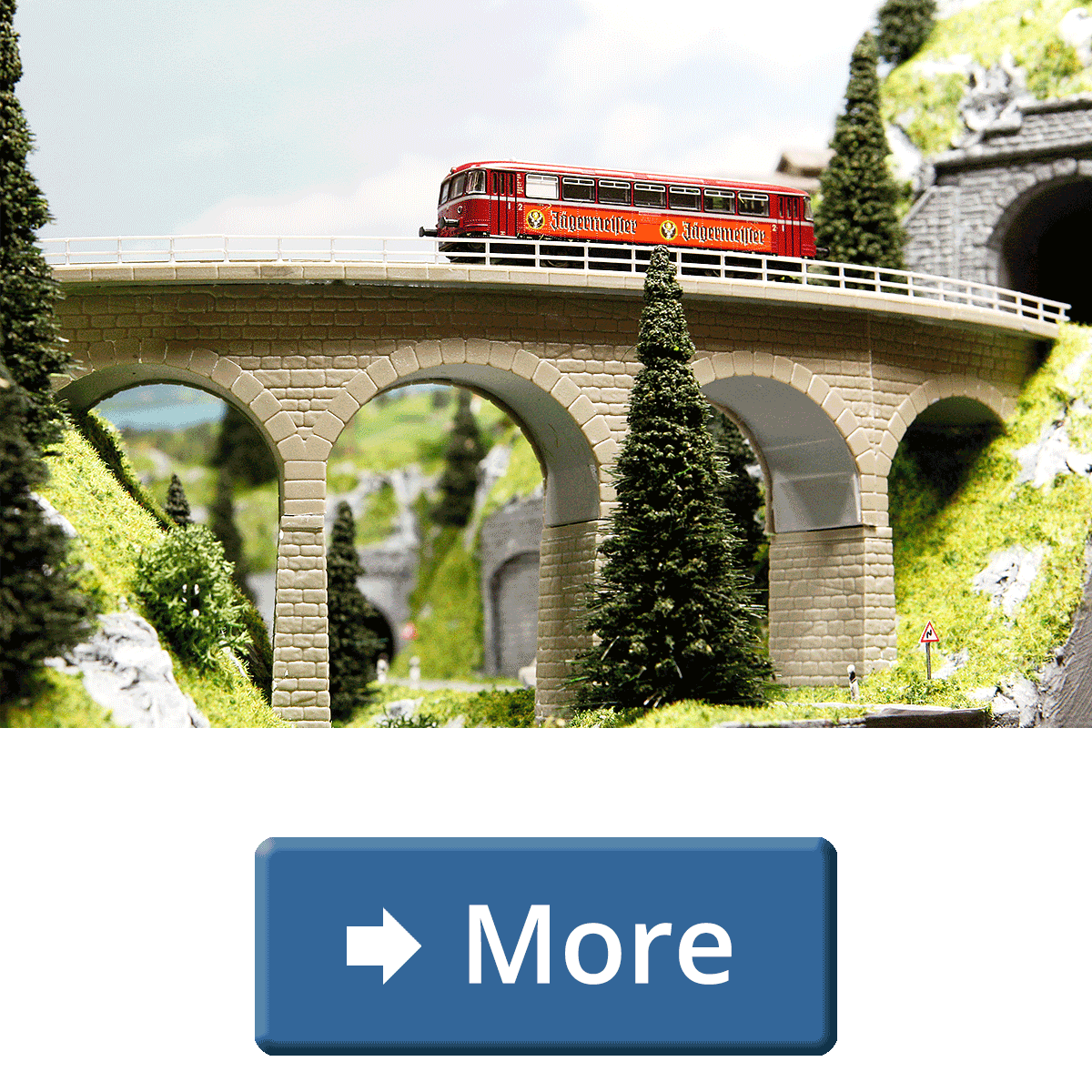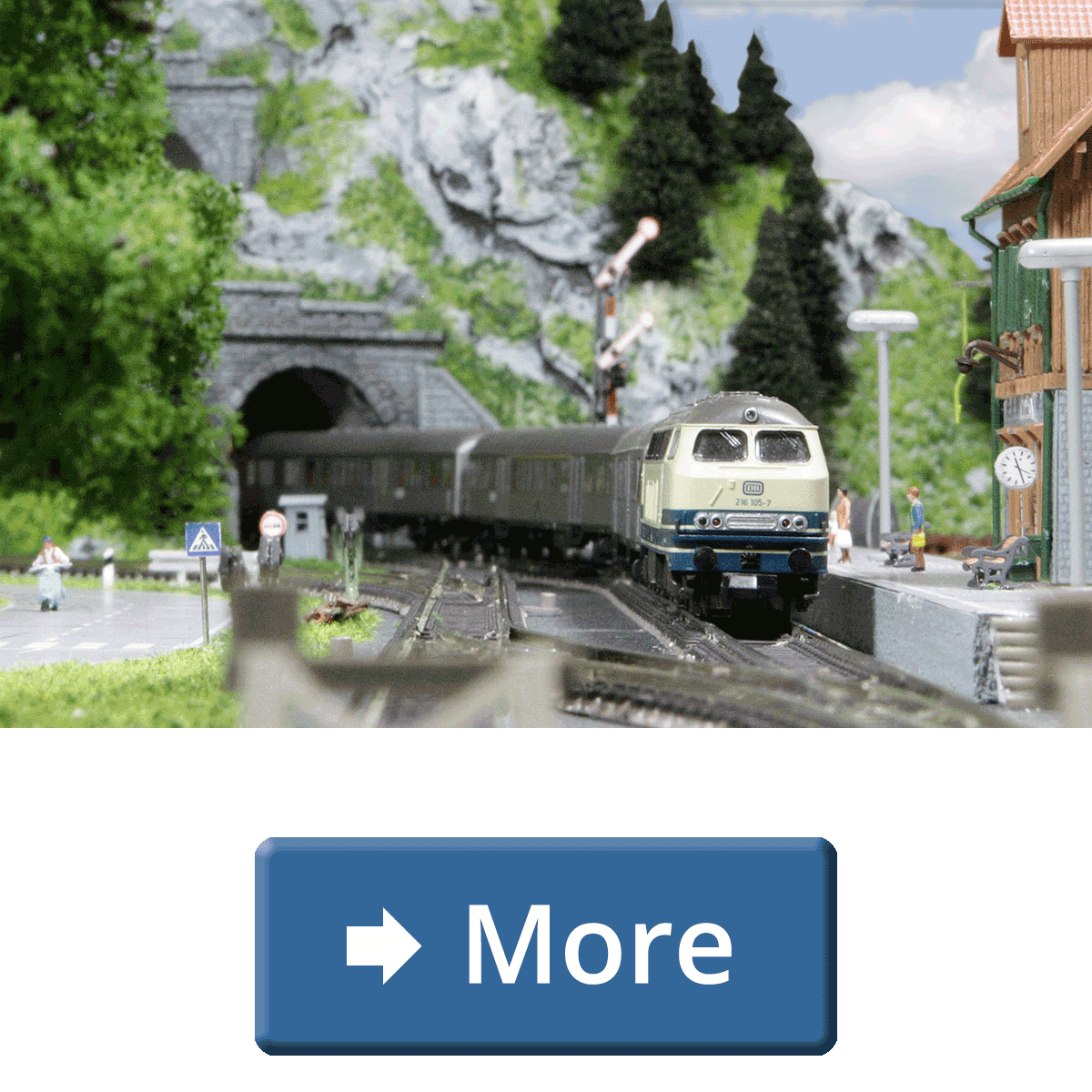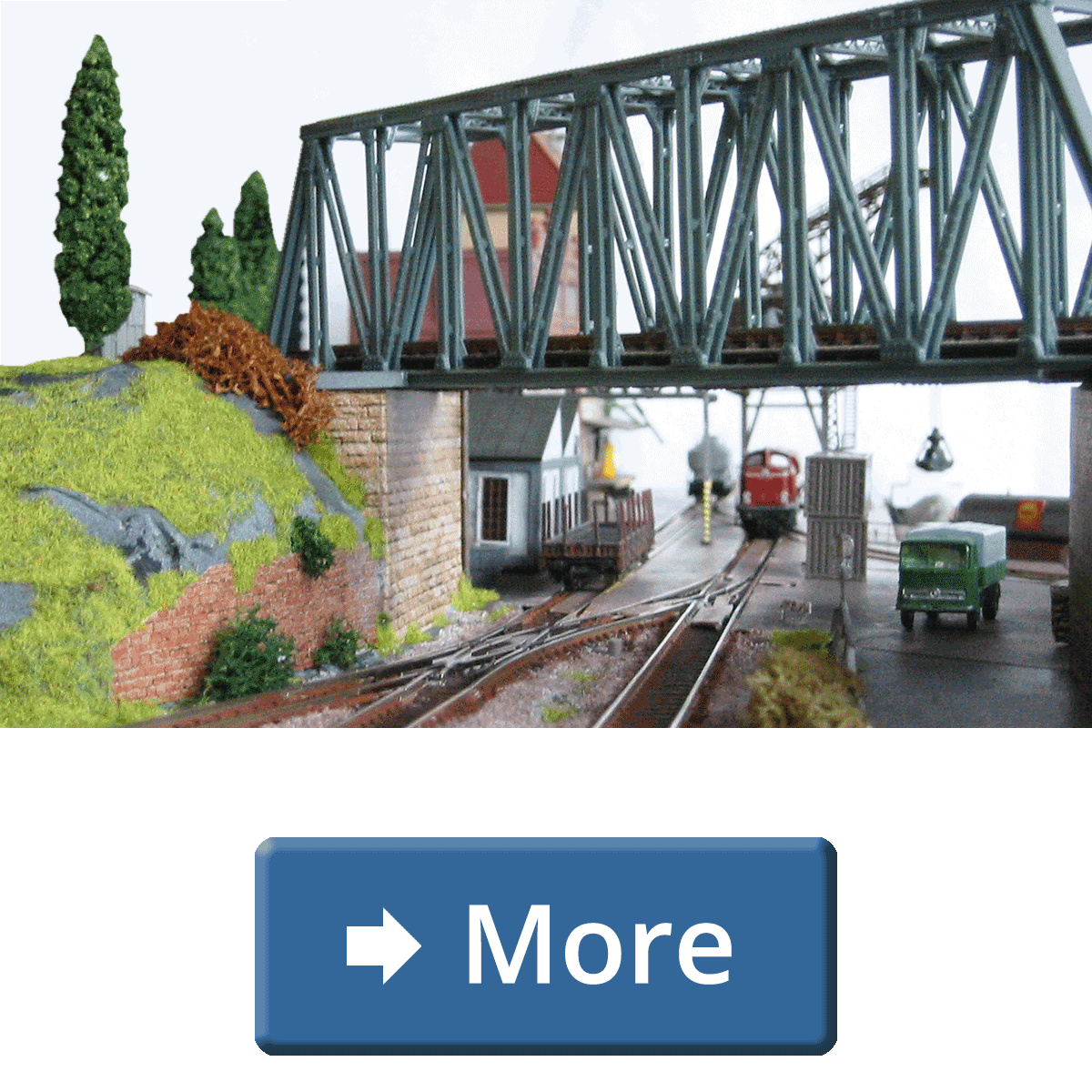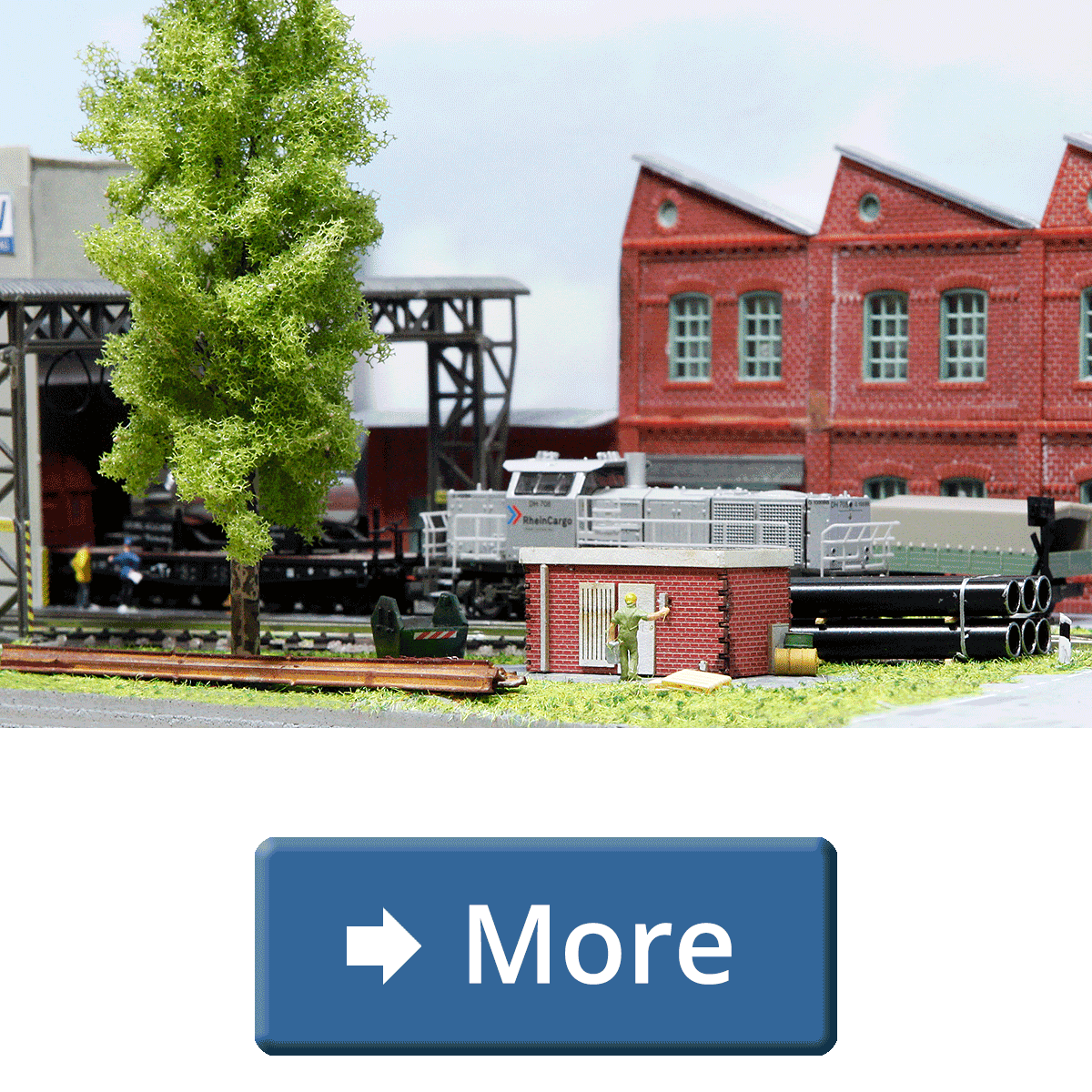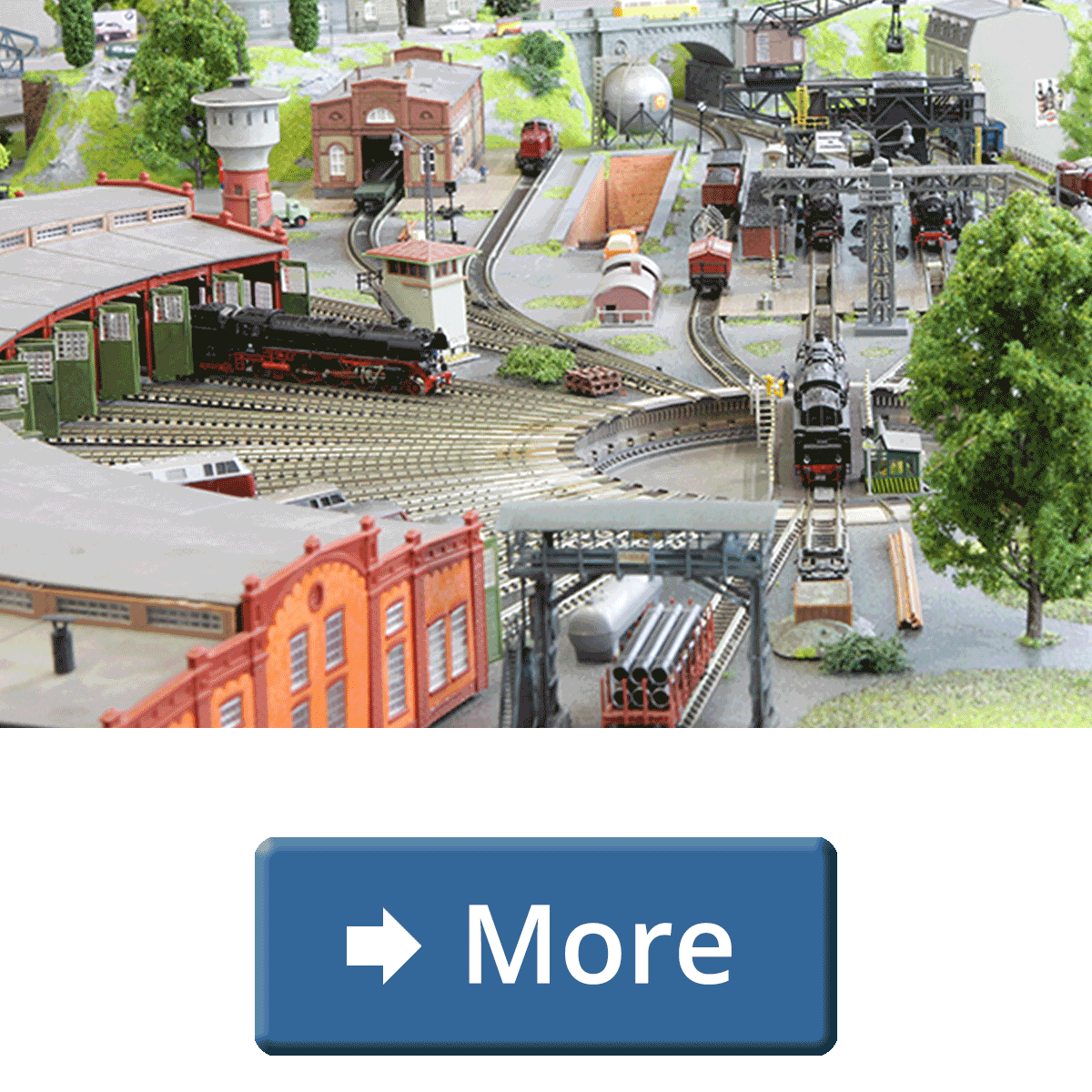My philosophy
I don’t like projects that last forever or stay forever. Getting finished within some weeks is the goal. And I don’t like huge layouts.
Instead, I prefer layouts of small or medium size that are easy to build. Changing projects, each focused on a specific topic. Because there comes a time when I get bored with an existing layout and want to try out a new idea.
That’s why a layout hardly exists for more than 5 or 6 years in my case. Then “model railroad recycling” comes up. Rails and buildings are reused for a new N scale layout.
If you call that “model railroad light” or “trash model making” – I wouldn’t mind. It’s just fun!
Why N scale?
There are many reasons to opt for an N scale model railway layout. The technology is reliable despite the small scale. The model fidelity is very detailed and the market for N scale supply is huge. The best argument, however, is the small space requirement. N gauge allows long trains and stunning layouts on a small area.
Some N scale facts
An N scale locomotive with 10 modern passenger cars has a length of about 6 ft. That corresponds to 183 cm. A considerable size, but feasible. But now convert that to HO scale. This train would have a length of 12 ft, which is the equivalent of 3.66 meters. An enormous dimension for a station platform, isn’t it?
The same applies to mountains or landscaping. The scale of 1:160 means that 1 ft in the model corresponds to a real height of 160 ft. This is a value you can work with if you have an eye for proportions and some talent for modeling and landscaping. But on a larger scale, assumed the same dimensions, this mountain would look ridiculous compared to the model trains.
How to build an N scale layout
“Help, I’m stuck”: Many model railroaders reach that point when building an N scale model railroad layout. Inaccurate layout planning is the reason. So before you start, think about what you want to show. Even in N scale you can’t put in one single layout a large station + mountains + river + lake + loco depot + turntable + city + village + industry + forest + long parade route. Unless you have a gym at your disposal.
Your way to the best N scale layout
The best layout ist that, which suits best your personal preferences. So the first step is to define individual requirements. The following checklist helps to avoid misplanning.
Getting N scale layout ideas
The next step is to concretize individual wishes. Don’t get trapped by IWES, the “I-Want-Everything-Syndrome”. When you cook, you don’t throw everything into one pot. You make decisions. The following checklist helps:

